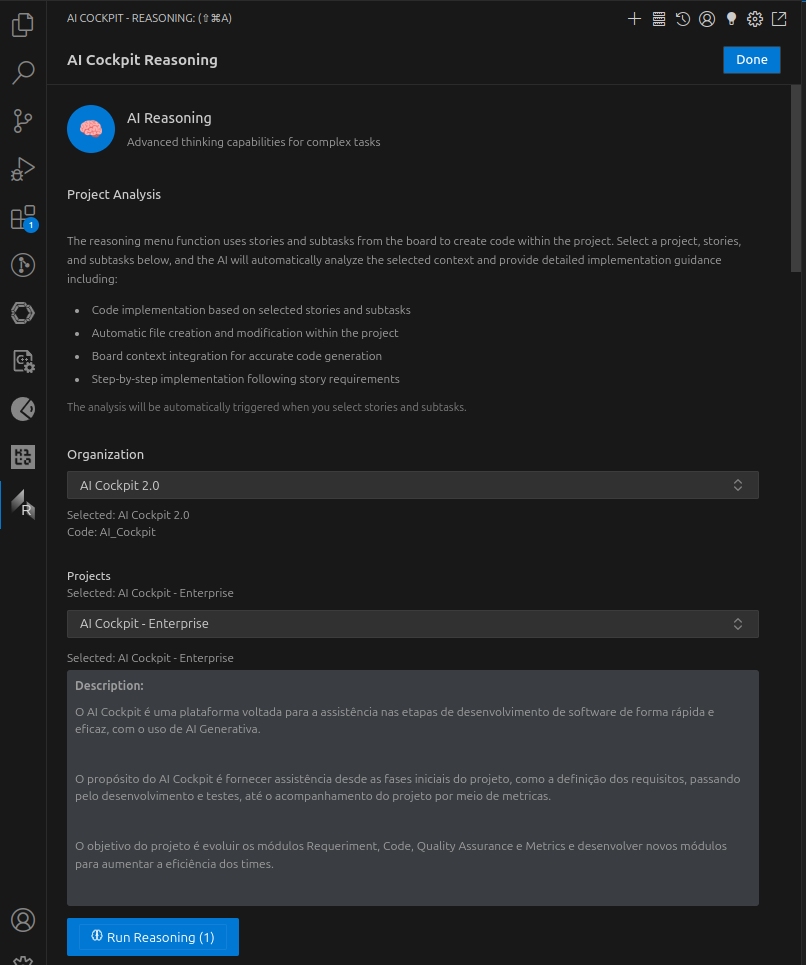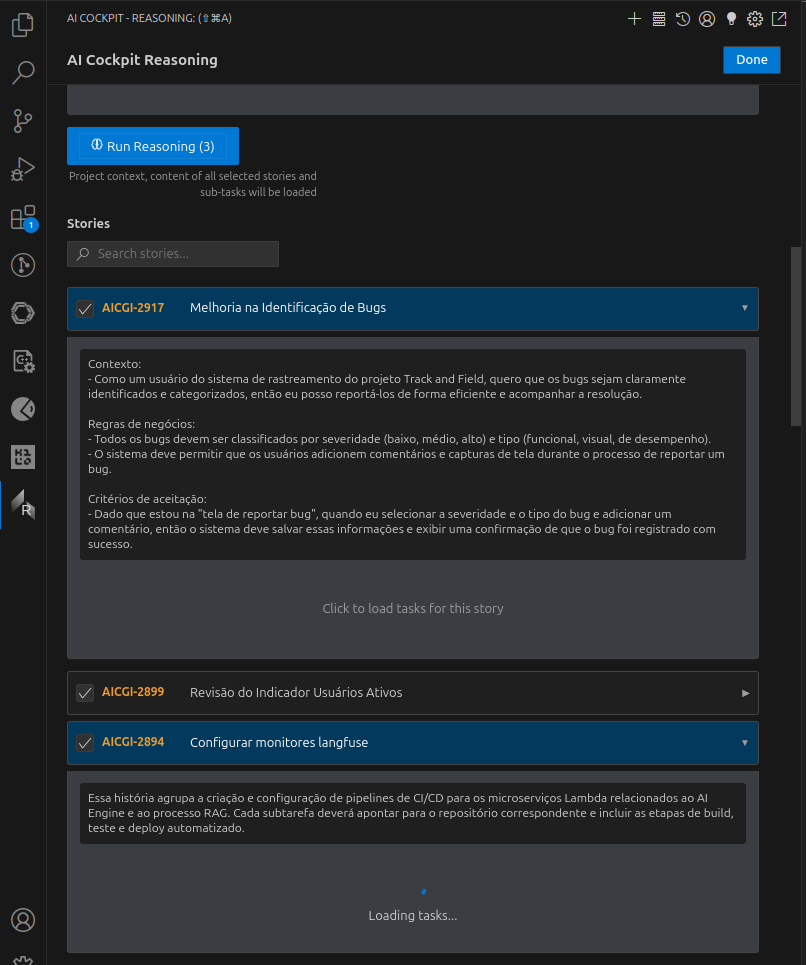Reasoning Functionality
The AI Cockpit Reasoning menu provides a powerful feature that allows you to automatically implement features based on stories and subtasks from your project board. This functionality bridges the gap between project management and code implementation by analyzing story descriptions and automatically generating the corresponding code.
Overview
The reasoning functionality enables you to:
- Connect to your AI Cockpit projects: Select from your available organizations and projects
- Import board stories: Automatically load stories and subtasks from your project board
- Analyze requirements: The AI analyzes story descriptions and acceptance criteria
- Generate implementations: Automatically search through your codebase and implement features in context
How It Works
1. Project Selection
First, you need to select your organization and project from the available options in AI Cockpit:

The interface allows you to:
- Choose from your available organizations
- Select a specific project within that organization
- View project descriptions and details
2. Story and Subtask Loading
Once you've selected a project, the reasoning menu will load all available stories and subtasks from your project board:

Features include:
- Search functionality: Quickly find specific stories using the search bar
- Story details: View complete story descriptions, business rules, and acceptance criteria
- Subtask management: Access and manage individual subtasks within stories
- Context loading: Click "Click to load tasks for this story" to view subtasks
3. Story Analysis and Implementation
The reasoning system analyzes each story's:
- Context: Understanding the business requirements and user needs
- Business rules: Identifying the specific rules that need to be implemented
- Acceptance criteria: Ensuring all requirements are met in the implementation
- Technical requirements: Determining the technical approach needed
Key Features
Automatic Code Implementation
- Code implementation based on selected stories and subtasks
- Automatic file creation and modification within the project
- Board context integration for accurate code generation
- Step-by-step implementation following story requirements
Intelligent Analysis
The analysis is automatically triggered when you select stories and subtasks, providing:
- Detailed understanding of requirements
- Technical implementation guidance
- Code structure recommendations
- Integration with existing codebase
Example Workflow
- Select Organization: Choose "AI Cockpit 2.0" from the organization dropdown
- Choose Project: Select "AI Cockpit - Enterprise" from the projects list
- Browse Stories: Review available stories like "AICGI-2917: Melhoria na Identificação de Bugs"
- Load Subtasks: Click to load tasks for specific stories
- Run Analysis: Click "Run Reasoning" to start the implementation process
Story Examples
Bug Identification Improvement (AICGI-2917)
Context: Improvement in the bug tracking system for the Track and Field project Requirements:
- Clear bug identification and categorization
- Efficient reporting and resolution tracking
- User comment capture during bug reporting
- Severity classification (low, medium, high) and type (functional, visual, performance)
User Activity Indicator Review (AICGI-2899)
Context: Review and update active user indicators Requirements: System improvements for better user activity tracking
Language Monitor Configuration (AICGI-2894)
Context: Configuration of CI/CD pipelines for Lambda microservices Requirements:
- Repository setup for AI Engine and RAG process
- Automated build, test, and deployment pipeline configuration
Best Practices
- Clear Story Descriptions: Ensure your stories have detailed descriptions and acceptance criteria
- Proper Organization: Keep your projects well-organized in AI Cockpit
- Review Before Implementation: Always review the generated implementation plan
- Iterative Approach: Work through stories systematically for best results
Benefits
- Faster Development: Automatically generate code from requirements
- Consistency: Maintain consistent coding patterns across implementations
- Traceability: Direct connection between requirements and code
- Quality: AI-driven analysis ensures comprehensive implementation
The reasoning functionality transforms your project management workflow by automatically bridging the gap between planning and implementation, making development more efficient and ensuring requirements are accurately translated into working code.